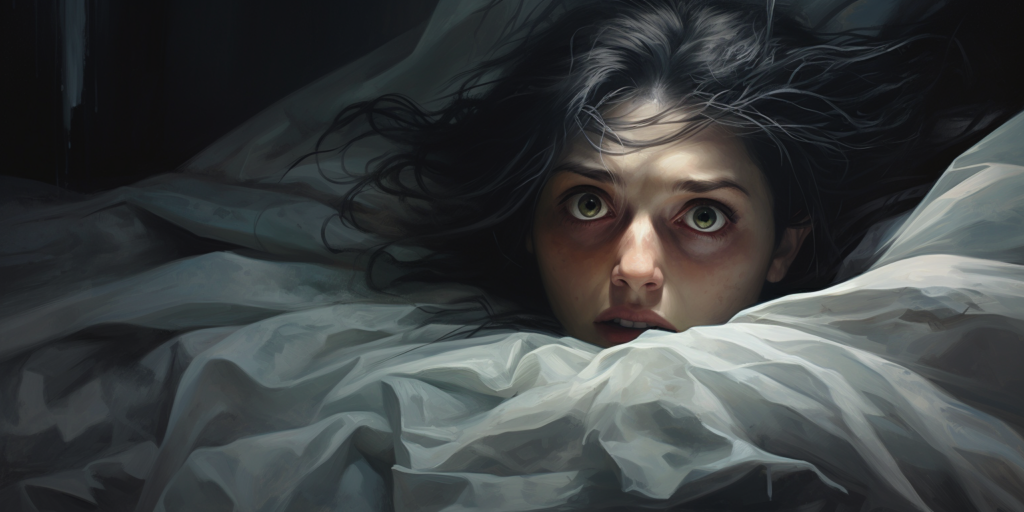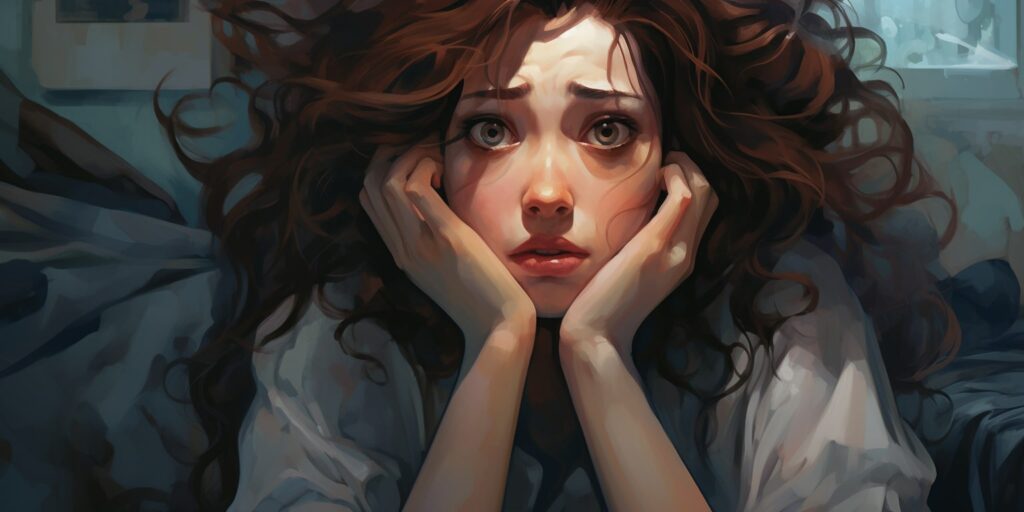Teraphobia. It’s a term you may not be familiar with, but it carries significant weight in the world of psychology. This is a fear that might seem strange to many, yet for those dealing with it, teraphobia is a very real and intimidating concern. It’s the fear of monsters or demonic beings – an anxiety disorder that can profoundly impact an individual’s everyday life.
Before we go deeper into understanding teraphobia, let’s first dissect its origin. The term ‘teraphobia’ comes from two Greek words: ‘tera’, meaning monster, and ‘phobos’, which signifies deep dread or fear. So essentially, teraphobia translates to an overwhelming dread of monsters.
I’m sure by now you’re wondering just how severe this phobia can be? Well, like any other phobia, its intensity varies from person to person depending on their past experiences or exposure level to triggering factors.
Understanding Teraphobia: A Brief Overview
I’m diving into the world of phobias today, focusing specifically on teraphobia. If you’re wondering what this term means, it’s simply the fear of monsters or fearsome beings. It’s not as widely known or discussed as other phobias like arachnophobia (fear of spiders) or claustrophobia (fear of enclosed spaces), but it’s real and affects many people around the world.
Teraphobia can be triggered by a variety of factors. For some, it might be childhood nightmares about boogeymen under the bed that linger into adulthood. Others might find their teraphobia sparked by horror movies featuring menacing creatures. Sometimes, cultural beliefs and folk tales about fearsome entities could also contribute to this fear.
Now let’s look at how teraphobia affects those who experience it. Just like any other phobia, individuals with teraphobia often experience intense anxiety when they encounter triggers related to their fear. This could mean panic attacks upon seeing images of monsters or even just discussing them.
Here are some common symptoms experienced by people struggling with teraphobia:
- Excessive sweating
- Tremors
- Rapid heartbeat
- Difficulty breathing
- Feeling dizzy or faint
Just remember – if you think you’re dealing with teraphobia, there’s help out there for you! Cognitive-behavioral therapy is often used to treat this condition and has shown significant success rates in helping patients overcome their fears.
So I’ve given a basic rundown on what teraphobia is and how it impacts those who suffer from it. In future sections of this article series, we’ll delve deeper into topics like treatment options and coping mechanisms for dealing with such fears.
The Psychological Basis of Teraphobia
Teraphobia isn’t just a random fear that pops up out of nowhere. It’s deeply rooted in our psychology. Science has shown that phobias, including teraphobia, often have their basis in our subconscious.
Let’s delve into the psychological elements at play here. First off, our brains are wired to protect us from harm. From ancient times when we needed to avoid predators, this instinct continues today in more modern forms like fear of heights or spiders – and yes, even monsters or evil spirits which teraphobia is all about.
Many psychologists believe that teraphobia may stem from early childhood experiences. For instance:
- A traumatic event involving scary stories or movies
- Overly strict religious upbringing with heavy emphasis on evil entities
- Unresolved feelings of terror from nightmares
All these can embed themselves into a child’s psyche and manifest as an irrational fear later in life.
A study conducted by the University College London found that phobias can be linked to certain brain functions. More specifically, individuals with intense fears show increased activity in the amygdala and insula – areas responsible for processing fear and emotions respectively.
| Area | Function |
|---|---|
| Amygdala | Processes Fear |
| Insula | Processes Emotions |
It’s interesting to note how our minds work! Despite living in an age where most people don’t believe in mythical beasts anymore, those old instincts can still kick into high gear causing teraphobia. This interplay between past experiences and brain function sheds light on why some people develop such specific fears while others do not.
Remember though: if you’re grappling with teraphobia or any other phobia for that matter, it’s always okay to seek professional help! Therapists and psychologists are trained to help you understand your fears better and provide strategies for handling them effectively.
Teraphobia Symptoms and Diagnosis Procedures
Teraphobia, the irrational fear of monsters or terrible beings, can often manifest in different ways. But let’s not get ahead of ourselves. It’s essential to remember that symptoms can vary from person to person based on their individual experiences and severity of phobia.
Symptoms typically involve intense anxiety and discomfort when thinking about or being confronted with the object of fear. In this case, that would be monsters or terrible beings. This anxiety might trigger physical reactions such as a racing heart, shortness of breath, sweating, trembling, dry mouth, and nausea.
In addition to these physical manifestations:
- There may be persistent thoughts about monsters
- Avoidance behavior where one goes out of their way to avoid anything related to monsters
- Panic attacks at the mere mention or thought of monsters
Now you’re probably wondering how do we go about diagnosing teraphobia? It’s not as straightforward as you might think.
Diagnosing a specific phobia like teraphobia primarily involves clinical interviews by mental health professionals who will evaluate your symptoms and compare them against diagnostic criteria set out in manuals such as the DSM-V (Diagnostic and Statistical Manual of Mental Disorders). These interviews are crucial for understanding the nature of your fear and ruling out other potential disorders.
Let me break it down for you:
- Firstly, they’ll need to confirm whether your fear is excessive or unreasonable.
- They’ll also assess if exposure to feared stimulus almost invariably provokes an immediate anxiety response.
- Lastly, they’ll check whether this phobia interferes significantly with your normal routine or activities.
Remember! Only qualified mental health professionals should perform diagnoses using appropriate assessment tools. So if you’re experiencing any symptoms mentioned above or believe you may have teraphobia – don’t hesitate to reach out for professional help!
Real-Life Instances of People with Teraphobia
Peering into the lives of those struggling with teraphobia, I’ve come across several authentic examples. These stories provide an insight into how this fear affects people’s daily lives and routines.
I was recently introduced to Sarah (not her real name), a 32-year-old woman residing in Seattle. She had been battling teraphobia for over a decade. Every time she encountered monsters or grotesque faces in movies, books, or even Halloween decorations, she would experience severe anxiety attacks. Avoiding these triggers became her primary focus, affecting her social life and mental health.
Then there’s Mark (name changed), a graphic designer from New York City. His job involves creating intriguing visuals, but his teraphobia has limited his creativity significantly. He shared that he often turns down projects involving designing grotesque creatures or faces due to extreme fear.
A forum dedicated to phobias highlighted the experience of Chloe (alias). She mentioned how her teraphobia forced her to abandon art school as studying classical sculptures and figures induced crippling panic attacks.
These are only a few instances from countless stories that exist globally:
- Sarah: Struggles with social activities due to fear of encountering monster-like figures.
- Mark: Turns down work opportunities because they trigger his phobia.
- Chloe: Had to give up on art school due to the potential exposure to terrifying images.
Their experiences underline how debilitating living with teraphobia can be for some individuals, affecting their personal lives, careers and mental well-being profoundly.
Different Types of Phobias Related to Teraphobia
Venturing into the realm of phobias, it’s crucial to understand that teraphobia isn’t an isolated fear. It’s part of a larger family, interconnected with other fears. Let me guide you through some phobias related to teraphobia.
First up on our list is Selachophobia: the fear of sharks. Even though shark attacks are rare, movies like Jaws have instilled a deep-seated fear in many people’s hearts about these ocean predators. Quite understandably, this phobia can enhance the effects of teraphobia due to the association between monsters and sharks.
Next up is Claustrophobia: the fear of enclosed spaces. This might seem unrelated at first glance but think about it; monsters often lurk in confined, dark places – basements, closets or under your bed! So those who already dread small spaces may find their teraphobia amplified.
Then we’ve got Nyctophobia: simply put, it’s the fear of darkness. Since monsters are typically portrayed as night-time creatures, lurking in shadows waiting for lights out, this ties directly into teraphobia.
Lastly there’s Coulrophobia – not as commonly known but equally significant – it’s the intense fear of clowns. Often depicted as monstrous figures in popular culture (think Pennywise from Stephen King’s “It”), coulrophobic individuals may also battle with intensified bouts of teraphobia.
Here’s a quick overview:
| Related Phobias | Description |
|---|---|
| Selachophobia | Fear of Sharks |
| Claustrophobia | Fear of Enclosed Spaces |
| Nyctophobia | Fear of Darkness |
| Coulrophobia | Fear Of Clowns |
Remember though – every individual is different and so are their experiences with these fears. Some might face one or two of these phobias along with teraphobia, while others might not have any connections at all! It’s the complexity and individual uniqueness that makes understanding phobias a never-ending exploration.
Effective Treatments for Overcoming Teraphobia
So you’ve found yourself wrestling with teraphobia, the fear of monsters or wild animals. I’m here to tell you, it’s a battle that can be won. A variety of treatments exist for overcoming teraphobia, and today we’ll delve into some of those most effective ones.
One common therapy approach is Cognitive-Behavioral Therapy (CBT). This form of treatment aims to change your thought patterns around monsters and wild animals, helping you recognize and challenge irrational fears. CBT often includes exposure therapy where you’re gradually introduced to the feared object in a safe environment. It’s like getting acquainted with an old frenemy!
Hypnotherapy could also be an option for dealing with teraphobia. Under the guidance of a trained professional, hypnosis can help reprogram your subconscious mind’s response to fear triggers. Don’t worry; it’s not about making you cluck like a chicken on stage! It’s more about breaking down those mental walls that hold your fears.
Another avenue worth exploring is Eye Movement Desensitization and Reprocessing (EMDR). This innovative therapy uses guided eye movements to help process and reduce the impact of traumatic memories surrounding your phobia.
Lastly, don’t underestimate the power of self-care in managing teraphobia. Regular exercise, balanced nutrition, adequate sleep – all these contribute towards better mental health overall. So while they might not directly ‘cure’ teraphobia, they’re invaluable tools in maintaining good psychological well-being during treatment.
Remember folks – there isn’t one-size-fits-all solution when dealing with phobias like teraphobia. What works wonders for one person might not have the same effect on another. That’s why it’s always best to seek advice from healthcare professionals who can suggest personalized treatment options based on individual needs.
Coping Strategies for Living with Teraphobia
Living with teraphobia, the fear of monsters or evil figures, can be a daunting experience. But I’m here to tell you that it’s not insurmountable. There are various strategies that you can adopt to manage your fears effectively.
Firstly, education is key. Understanding what triggers your teraphobia and why is a fundamental step towards overcoming this fear. It’s important to know that phobias like teraphobia often stem from traumatic experiences in childhood or adolescence, but they can also be influenced by cultural beliefs or even genetics.
Next up – exposure therapy. Gradually exposing yourself to the source of your fear in a controlled and safe environment has been shown to significantly reduce anxiety symptoms associated with phobias. For instance, watching films or reading books featuring benign monsters could be an option.
Mindfulness and relaxation techniques such as deep breathing exercises and progressive muscle relaxation can also offer relief from the intense anxiety associated with teraphobia. These practices help recalibrate the body’s response system to fear stimuli.
Cognitive-behavioral therapy (CBT) is another effective strategy for coping with teraphobia. This form of therapy focuses on identifying negative thought patterns that contribute to the fear and works on replacing them with healthier ones.
Lastly, seeking professional help can make all the difference in managing teraphobia successfully. Psychologists and therapists trained in treating phobias use a variety of techniques tailored specifically for each individual’s needs.
So there you have it! A few helpful tips for coping with teraphobia: educating yourself about your phobia, trying exposure therapy, practicing mindfulness techniques, considering CBT treatment options, and reaching out for professional help when needed.
Conclusion: Embracing Life Beyond Teraphobia
Living with teraphobia isn’t easy, but it’s not impossible to overcome. It may seem like a mountainous task, yet remember that even the loftiest peaks are scaled one step at a time. I’ve seen countless individuals conquer this fear and reclaim their lives – you can too.
Treatment options for teraphobia are plentiful and effective. Cognitive-behavioral therapy (CBT) has shown immense success in helping people manage their fears. It’s about altering the thought patterns that trigger anxiety and replacing them with healthier responses.
Here’s a quick rundown of other successful methods:
- Exposure Therapy: Gradual exposure to the object of fear can desensitize an individual over time.
- Mindfulness Practices: Techniques such as meditation and deep-breathing exercises help regulate emotional responses.
- Medication: While not a cure-all, medication can be used in conjunction with therapy to alleviate severe symptoms.
Remember, there’s no shame in seeking professional help if you’re struggling with teraphobia or any phobia for that matter. Mental health professionals are equipped with the tools and knowledge to guide you towards recovery.
Let’s face it; life is too short to let irrational fears hold us back from enjoying our journey fully. So here’s my final thought – embrace your fear, confront it head-on, seek help when needed, and watch yourself grow stronger each day. After all, conquering our fears isn’t merely about eliminating anxiety; it’s about rediscovering our capabilities and pushing past our self-imposed limitations.
Embrace life beyond teraphobia — because you deserve nothing less than freedom from fear!



